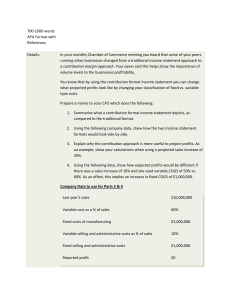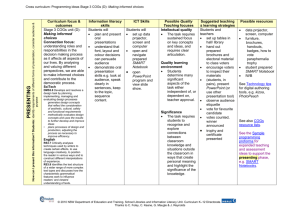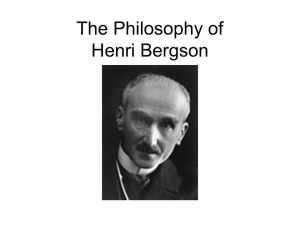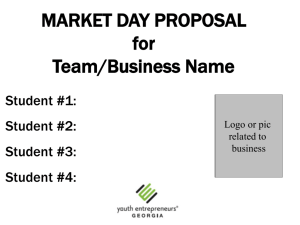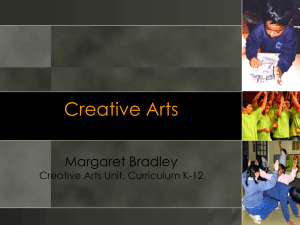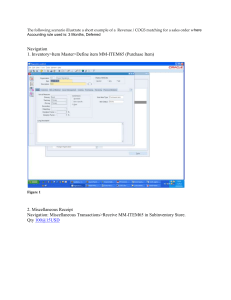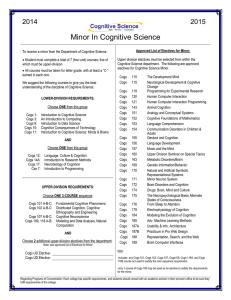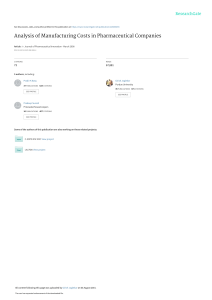− MULTIDISCIPLINARY RESEARCH ON TWO THE COGS FROM DOEL MEDIEVAL SHIPWRECKS
advertisement
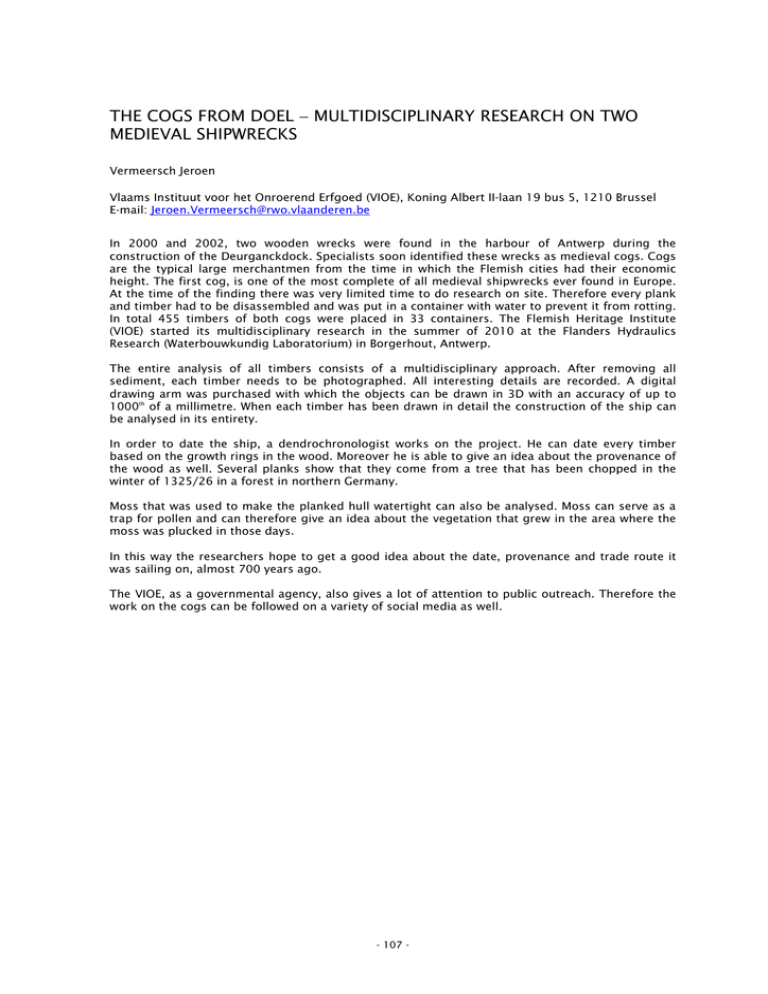
THE COGS FROM DOEL − MULTIDISCIPLINARY RESEARCH ON TWO MEDIEVAL SHIPWRECKS Vermeersch Jeroen Vlaams Instituut voor het Onroerend Erfgoed (VIOE), Koning Albert II-laan 19 bus 5, 1210 Brussel E-mail: Jeroen.Vermeersch@rwo.vlaanderen.be In 2000 and 2002, two wooden wrecks were found in the harbour of Antwerp during the construction of the Deurganckdock. Specialists soon identified these wrecks as medieval cogs. Cogs are the typical large merchantmen from the time in which the Flemish cities had their economic height. The first cog, is one of the most complete of all medieval shipwrecks ever found in Europe. At the time of the finding there was very limited time to do research on site. Therefore every plank and timber had to be disassembled and was put in a container with water to prevent it from rotting. In total 455 timbers of both cogs were placed in 33 containers. The Flemish Heritage Institute (VIOE) started its multidisciplinary research in the summer of 2010 at the Flanders Hydraulics Research (Waterbouwkundig Laboratorium) in Borgerhout, Antwerp. The entire analysis of all timbers consists of a multidisciplinary approach. After removing all sediment, each timber needs to be photographed. All interesting details are recorded. A digital drawing arm was purchased with which the objects can be drawn in 3D with an accuracy of up to 1000th of a millimetre. When each timber has been drawn in detail the construction of the ship can be analysed in its entirety. In order to date the ship, a dendrochronologist works on the project. He can date every timber based on the growth rings in the wood. Moreover he is able to give an idea about the provenance of the wood as well. Several planks show that they come from a tree that has been chopped in the winter of 1325/26 in a forest in northern Germany. Moss that was used to make the planked hull watertight can also be analysed. Moss can serve as a trap for pollen and can therefore give an idea about the vegetation that grew in the area where the moss was plucked in those days. In this way the researchers hope to get a good idea about the date, provenance and trade route it was sailing on, almost 700 years ago. The VIOE, as a governmental agency, also gives a lot of attention to public outreach. Therefore the work on the cogs can be followed on a variety of social media as well. - 107 -
